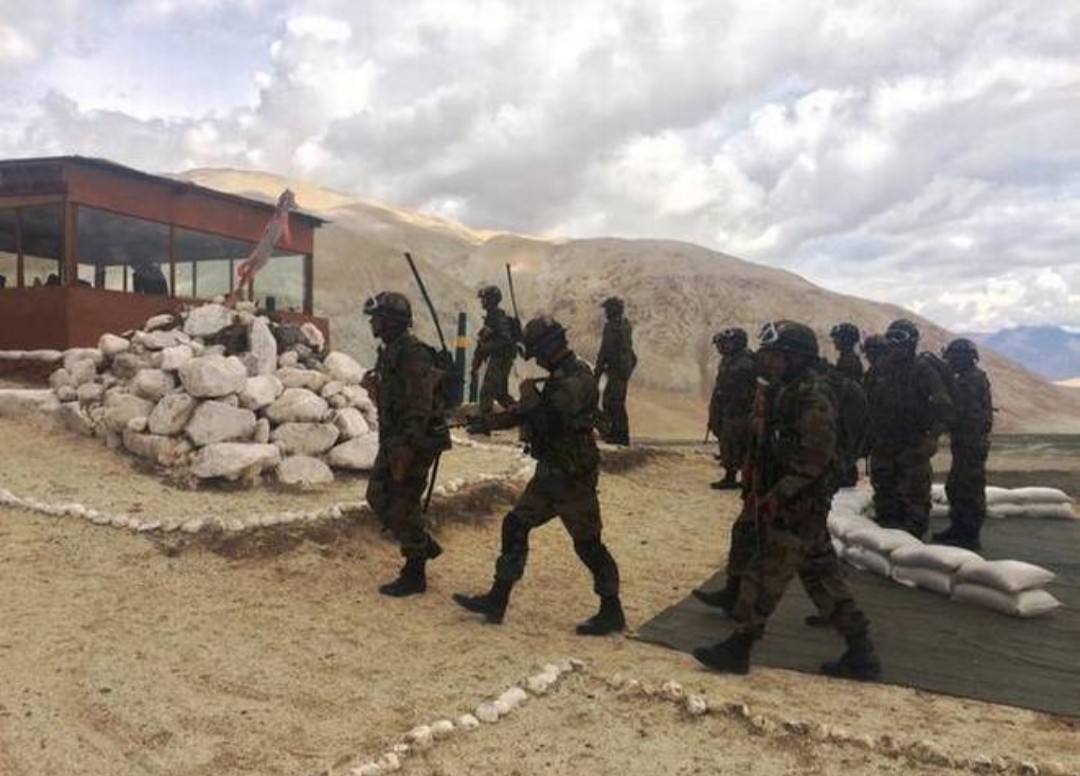India has stressed that it was the Chinese side that attacked its troops in a “pre-meditated” manner
China’s People’s Liberation Army (PLA) on Wednesday said the June 15 clash in Galwan Valley “happened entirely on the Chinese side of the Line of Actual Control” (LAC) and accused Indian troops of crossing the line, saying “the responsibility entirely lies with India” for the incident.
In its most detailed comments so far on the unprecedented clash in the valley that claimed the lives of 20 Indian soldiers — China has not revealed the number of its casualties — the Defence Ministry in Beijing reiterated China’s “sovereignty over Galwan Valley”. The Defence Ministers of the two countries had been in communication over phone following the incident, it stated.
“What is shocking is that on the evening of June 15, the Indian front line frontier troops openly violated the consensus reached by the two parties [on June 6], went back and forth across the line, crossed the LAC again and deliberately provoked China,” said PLA Senior Colonel and Defence Ministry spokesperson Wu Qian.
“While negotiating on the spot, Chinese officers and soldiers were suddenly violently attacked by the Indian side. This triggered intense physical clashes between officers and soldiers on both sides, resulting in casualties,” he said.
India, however, has stressed that it was the Chinese side that attacked its troops in a “pre-meditated” manner, following a dispute over a tent set up by China on India’s side of the LAC.
Senior Colonel Wu said, “The Chinese border guards have taken decisive measures to defend themselves and resolutely responded to the violent acts of the Indian side, effectively safeguarding national sovereignty and territorial integrity. The incident was entirely caused by India’s violation of consensus and unilateral provocation. It happened entirely on the Chinese side of the LAC approved by both parties The responsibility lies entirely with India. The Chinese side requires the Indian side to severely punish the perpetrators and strictly control the front line troops to ensure that such incidents will not happen again.”
The LAC observed by both sides runs through the valley and east of the confluence of the Galwan and Shyok rivers. Senior Colonel Wu said the clash happened on the Chinese side of the line “approved by both parties”.
India’s assertion
India, however, has said its troops did not cross the LAC, and that the clash was triggered by China breaking the June 6 consensus and erecting structures on India’s side of the line.
While initially referring to the agreed upon LAC, Senior Colonel Wu subsequently referred to the entire valley east of the Shyok river as Chinese territory and that China had since April objected to India’s activities east of the Shyok.
He said, “China has sovereignty over Galwan Valley” and “for many years, Chinese border guards have been patrolling and performing their duties here.” “Since April this year, the Indian border defence forces have unilaterally built facilities in the region, and China has repeatedly made representations and protests on this. In the early hours of May 6, the Indian border guards crossed the line and entered the Chinese territory to construct barriers, blocking the normal patrol of the Chinese border guards, and attempted to unilaterally change the status of border control. The Chinese border defence force had to take necessary measures to strengthen on-site response and control of the border area,” he said.
At the Corps Commander level meet on June 6, he said, both sides agreed “to take practical measures to ease the situation in the border areas.” This included India “promising not to patrol and build facilities at the mouth of the Galwan River”, or the Galwan-Shyok confluence. The two sides agreed to withdraw the troops in batches through a meeting of local commanders.
India said the consensus was breached by China erecting structures on its side of the LAC.
Senior Colonel Wu said both sides had been in touch through military and diplomatic channels following the clash, and that the two defence ministers were also talking by phone. “China and India are important neighbours to each other, and maintaining peace and tranquility in the border area is in the common interests of both parties and requires the joint efforts of both parties. We hope that India and China will meet each other halfway, effectively implement the important consensus between the leaders of the two countries, strictly abide by the agreement reached by the two parties, continue to properly resolve relevant issues through dialogue and negotiation at all levels. We will make joint efforts to ease the situation in the border areas and maintain peace and stability in the border areas,” he said.
With inputs from The Hindu

